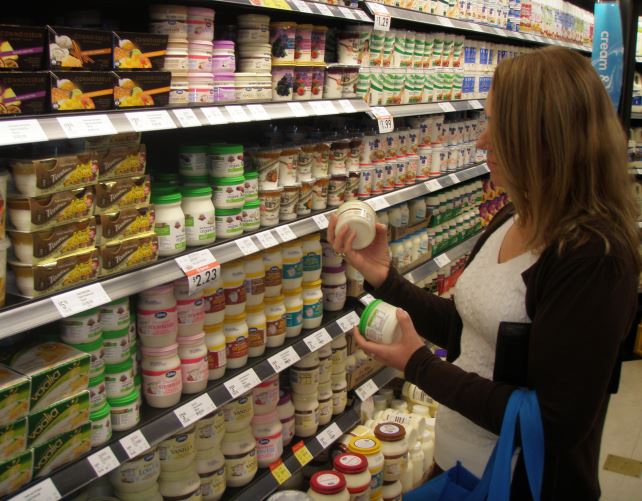Shelf-life of dairy products
Ever sniffed a milk carton to see if it’s still ok to use? Who hasn’t!
But it is difficult to know when milk, cream, cheese, or yoghurt should be thrown out.
Shelf-life is the period of time that a food may be stored before it starts to deteriorate or become potentially unsafe. It is influenced by the quality of the raw materials, the manufacturing processes, the way the product is packaged, storage conditions and whether it has been opened. Temperature control during all storage stages is particularly important for most foods – in the retail store and the home.
Almost all dairy products need to be stored in the refrigerator. The exceptions include powdered milk products, and products such as UHT (Ultra–high temperature) products, which can be stored in the pantry, or ice cream which needs to be stored in the freezer.
The period of time each dairy product stays fresh varies significantly. For example, pasteurised milk will keep for 12–14 days if kept below 4°C, while yoghurt and similar fermented products should remain of a good quality for 30–40 days under the same storage conditions. The following lists the typical shelf-life of dairy products in the refrigerator.
- Pasteurised whole milk: 12–14 days. Skim and flavoured milks usually have a shorter shelf life.
- Yoghurt: 4–6 weeks
- Hard and semi-hard cheeses: Depending on the type, it may be kept for several weeks to months.
- Cottage cheese, ricotta and cream cheese: 1–2 weeks
- Butter (salted): A shelf-life of about 4 weeks. Unsalted butter has a shelf-life of 2–3 weeks.
- Ice cream and frozen yoghurt: In the freezer 2–6 months.
The best advice is to follow the manufacturer's instructions on the label. Respect use-by dates as they usually indicate the date until which the product can be safely consumed. The best-before date is the time that a properly stored, unopened package will retain its freshness, taste, and nutritional value. Food past its best-before date is not necessarily dangerous to consume.
Finally, if your milk is spoiling before the use-by date on the container, your refrigerator may be too warm.

